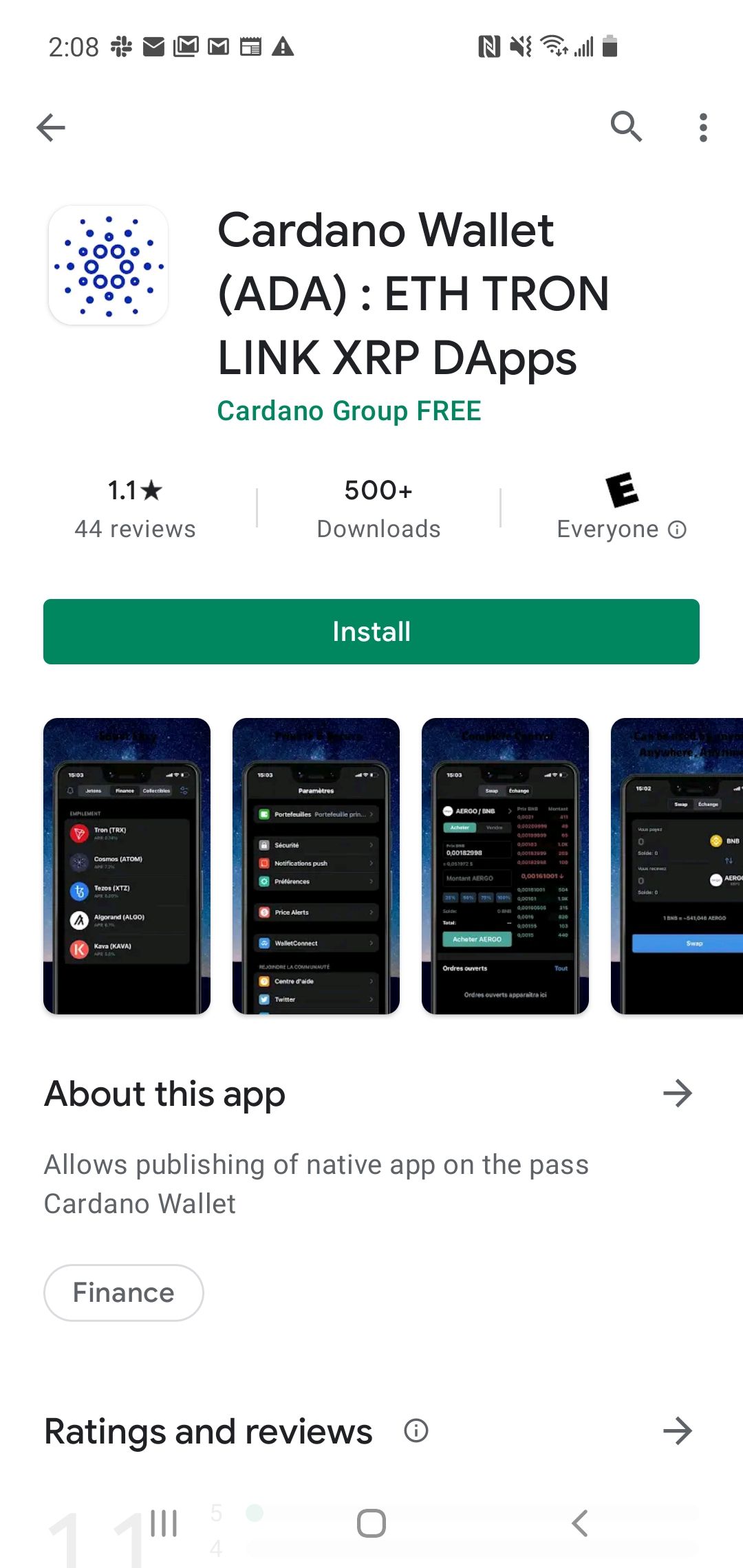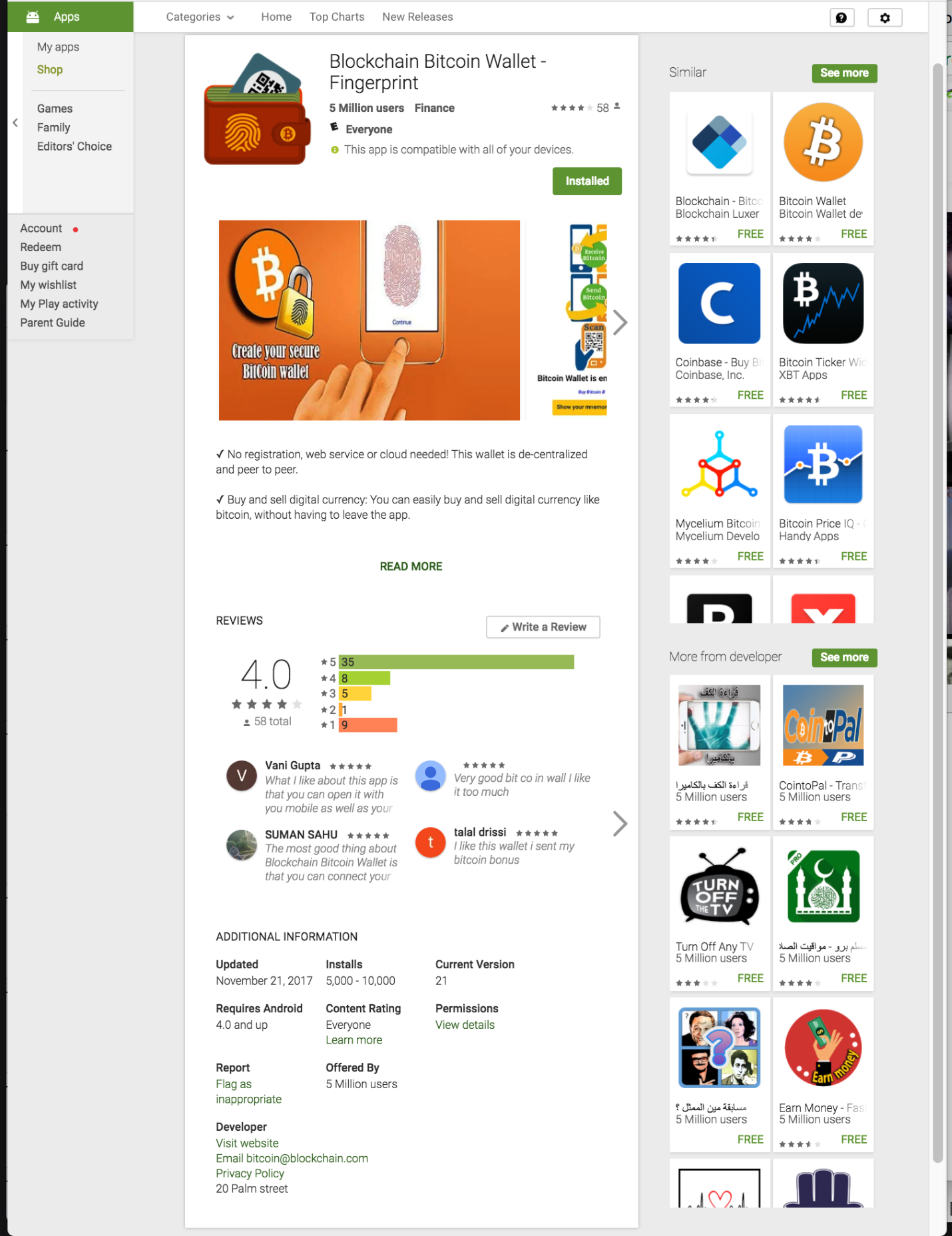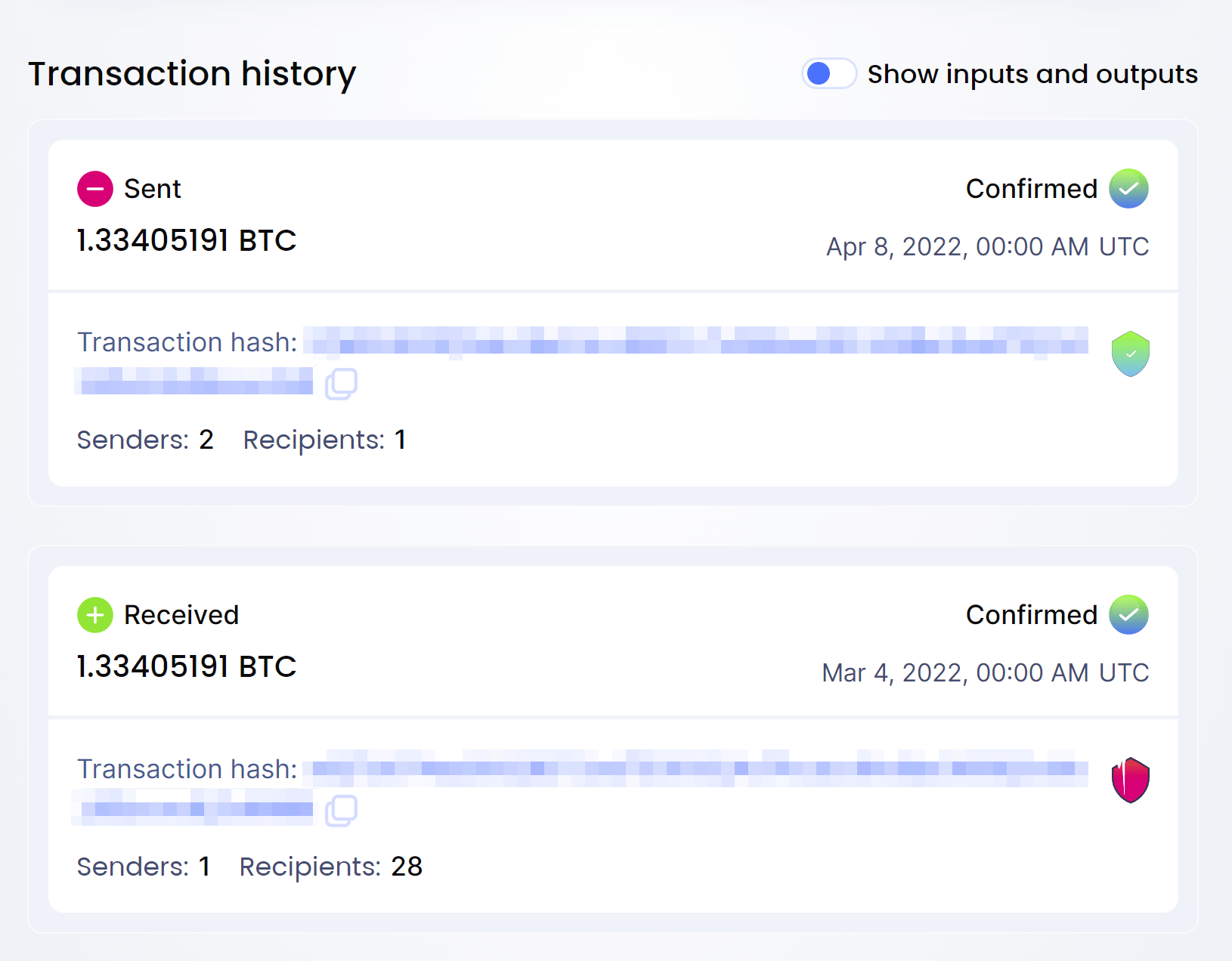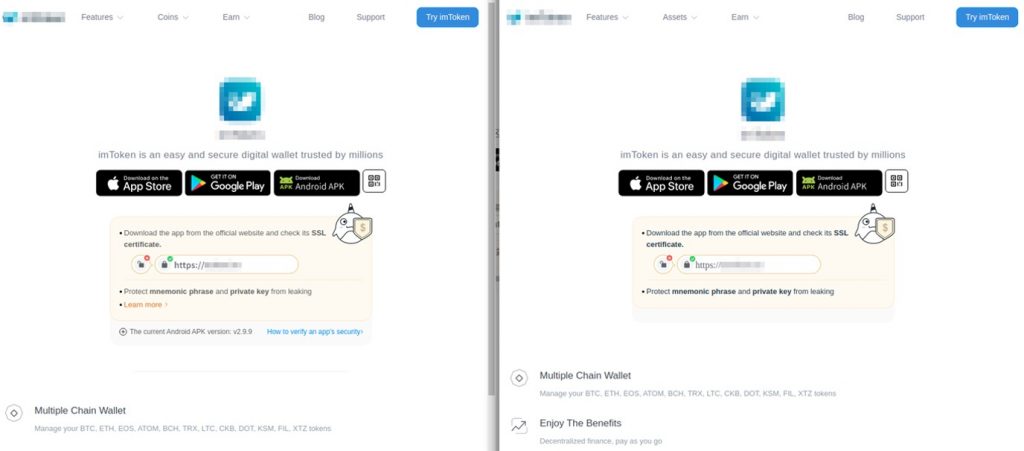Bitcoin has gained significant popularity and value over the years, making it an attractive target for fraudsters and scammers. One of the concerns that users may have is whether it is possible to send fake Bitcoin to a blockchain wallet.
The short answer is no, it is not possible to send fake Bitcoin to a blockchain wallet. Bitcoin transactions are verified and recorded on the blockchain, which is a decentralized public ledger. This means that every transaction is transparent and can be traced back to its origin.
In order to send Bitcoin to a blockchain wallet, the transaction must go through a process called mining, where miners use computational power to solve complex mathematical problems. This ensures the authenticity and integrity of the transaction.
While it is not possible to send fake Bitcoin, it is still important to be cautious and vigilant when dealing with cryptocurrencies. There have been cases where scammers have attempted to trick users into sending their Bitcoin to fraudulent wallets or participating in fraudulent schemes.
To avoid falling victim to such scams, it is recommended to follow some basic security steps. These include verifying the legitimacy of the wallet or platform you are using, double-checking the Bitcoin address before making a transfer, and being skeptical of any promises of exorbitant returns or get-rich-quick schemes.
By understanding the workings of the blockchain and being aware of fraudulent tactics, users can protect themselves and their Bitcoin from any potential forgery or fraudulent transfers.
- Ways to send fraudulent Bitcoin to blockchain wallet
- 1. Counterfeit Bitcoin
- 2. Forgery of transactions
- 3. Manipulating wallet addresses
- Steps to send fraudulent Bitcoin:
- Related words:
- “Fraudulent”
- Counterfeit Bitcoin
- Steps to Recognize the Transfer
- Related Risks
- How to Avoid Fake Bitcoin Transfers
- Counterfeit
- How can you send fake Bitcoin to a blockchain wallet?
- Steps to protect yourself from counterfeit Bitcoin
- How to transfer counterfeit Bitcoin to blockchain wallet
- Steps to send fake Bitcoin to blockchain wallet
- Forgery
- How can one send fake Bitcoin to a blockchain wallet?
- Countermeasures against fake Bitcoin:
- Frequent questions:
- Can you send fake Bitcoin to a blockchain wallet?
- What does forgery mean?
- What are some related words to forgery?
- What are the ways to send fraudulent bitcoin to a blockchain wallet?
- What are the steps to send fake bitcoin to a blockchain wallet?
- How can someone transfer counterfeit bitcoin to a blockchain wallet?
- What is counterfeit?
- Video:
- How to generate and send a fake Bitcoin to any wallet
Ways to send fraudulent Bitcoin to blockchain wallet
Blockchain, the distributed ledger technology, has revolutionized the way transactions are recorded and verified. However, this also presents opportunities for individuals with malicious intent to attempt to send fake or fraudulent Bitcoin to blockchain wallets. Here are some ways in which this can be done:
1. Counterfeit Bitcoin

One way to send fraudulent Bitcoin to a blockchain wallet is by creating counterfeit Bitcoin. This involves generating fake Bitcoin tokens that resemble the legitimate ones. These counterfeit tokens are then sent to a blockchain wallet, giving the illusion of a legitimate transaction. However, these tokens have no value and are essentially worthless.
2. Forgery of transactions
Another method of sending fake Bitcoin to a blockchain wallet is by forging transactions. This involves creating fake transaction records that appear legitimate. These forged transactions are then processed by the blockchain network and added to the ledger, making it seem like a genuine transfer of Bitcoin. However, in reality, no actual Bitcoin is being transferred.
3. Manipulating wallet addresses
A more advanced technique involves manipulating wallet addresses. This can be done by intercepting a transaction and modifying the recipient’s wallet address to that of the fraudster’s. When the transaction is processed by the blockchain network, it appears as a transfer to the intended recipient, but in reality, the funds end up in the fraudster’s wallet.
Steps to send fraudulent Bitcoin:
- Create counterfeit Bitcoin tokens or forge transaction records.
- Identify a target blockchain wallet.
- Manipulate the wallet address in the transaction.
- Initiate the fraudulent transfer to the manipulated wallet address.
- Wait for the transaction to be processed by the blockchain network.
- Monitor the blockchain explorer to make sure the fraudulent transaction is recorded.
It is important to note that these actions are illegal and unethical. Engaging in fraudulent activities can result in severe legal consequences. This article is intended for informational purposes only, to raise awareness about the potential vulnerabilities and risks associated with blockchain technology.
Related words:

- to
- bitcoin
- counterfeit
- ways
- wallet
- fake
- steps
- fraudulent
- blockchain
- how
- transfer
- forgery
- send
“Fraudulent”

When it comes to the world of cryptocurrencies, fraudulent activities and scams are unfortunately not uncommon. One particular fraudulent scheme involves the transfer of fake Bitcoin to a blockchain wallet.
Counterfeit Bitcoin

Fraudulent actors may attempt to send fake Bitcoin to a blockchain wallet in order to deceive unsuspecting victims. These counterfeit coins often mimic the appearance of genuine Bitcoin, making it difficult for the recipient to detect the forgery.
Steps to Recognize the Transfer
It is important to be cautious and vigilant to avoid falling victim to such deceptive practices. Here are a few steps to help identify a potential fraudulent transfer:
- Verify the sender’s reputation and authenticity.
- Thoroughly inspect the transaction details for any suspicious elements.
- Cross-check the blockchain data to confirm the legitimacy of the transfer.
- Avoid accepting transfers from unknown sources without proper verification.
Related Risks
Engaging with fake or fraudulent Bitcoin transfers can expose unsuspecting individuals to various risks:
- Loss of funds through accepting counterfeit Bitcoin.
- Compromised security of the blockchain wallet.
- Potential legal consequences for participating in illegal activities.
How to Avoid Fake Bitcoin Transfers
Here are a few ways to minimize the risk of receiving fake Bitcoin:
- Only accept Bitcoin transfers from trusted and reputable sources.
- Double-check the blockchain transaction history to verify the authenticity of the coins.
- Stay informed about common scams and fraudulent schemes in the cryptocurrency community.
- Follow best practices for securing your blockchain wallet.
By staying vigilant, practicing due diligence, and taking necessary precautions, individuals can protect themselves from falling victim to fake and fraudulent Bitcoin transfers on the blockchain.
Counterfeit

Counterfeit or fraudulent transfer of Bitcoin refers to the act of sending fake or non-existent Bitcoin to a blockchain wallet. This deceptive practice is an attempt to trick the recipient into believing they have received valid Bitcoin when in reality there is none. It is important to be aware of the ways in which this type of fraud can occur and steps to protect oneself from falling victim to it.
How can you send fake Bitcoin to a blockchain wallet?

While it is not possible to create fake Bitcoin on the blockchain itself due to its decentralized nature, there are ways in which fraudulent transfers can take place:
- Phishing: Fraudsters may try to deceive users into entering their private keys or wallet information on a fake website or application, giving them access to the victim’s Bitcoin wallet. The fraudsters can then send the victim’s Bitcoin to their own wallet, making it appear as if the victim has received fake Bitcoin.
- False promises: Scammers may promise high returns or special offers in exchange for Bitcoin, only to send fake or non-existent Bitcoin to the victim’s wallet after they have made the transfer.
- Double-spending: This technique involves a malicious user attempting to spend the same Bitcoin twice by creating multiple transactions and broadcasting them to the network. If the fraudulent transaction gets confirmed before the legitimate one, it can lead to the victim receiving fake Bitcoin.
Steps to protect yourself from counterfeit Bitcoin
To protect yourself from fraudulent transfers or receiving fake Bitcoin, it is important to take the following precautions:
- Be cautious with your private keys and wallet information, never share them with anyone or enter them on untrusted websites or applications.
- Verify the legitimacy of any offers or promises that involve Bitcoin and be wary of anything that sounds too good to be true.
- Always double-check the transaction details before confirming and ensure that you are dealing with trusted parties.
- Stay informed about the latest security measures and best practices for using Bitcoin and blockchain technology.
By being vigilant and taking the necessary precautions, you can help protect yourself from falling victim to fraudulent transfers or receiving fake Bitcoin into your blockchain wallet.
How to transfer counterfeit Bitcoin to blockchain wallet
Transferring counterfeit Bitcoin to a blockchain wallet involves forgery and fraudulent activities. It is important to note that such actions are illegal and unethical.
- Create a fake blockchain wallet: The first step in transferring counterfeit Bitcoin is to create a fake blockchain wallet. This can be done by downloading a wallet app or using an online service that allows you to create a wallet.
- Generate a fake Bitcoin address: Once you have a fake wallet, you need to generate a counterfeit Bitcoin address. This address will be used to receive the fake Bitcoins.
- Create counterfeit Bitcoins: In order to transfer fake Bitcoins, you need to generate counterfeit coins. This can be done by manipulating the blockchain’s algorithm or by creating a fraudulent transaction record.
- Send the counterfeit Bitcoin: After generating the fake Bitcoins, you can proceed to send them to the fake Bitcoin address you created earlier. This step involves initiating a fraudulent transfer from your fake wallet to the counterfeit address.
- Record the fraudulent transaction: To create the illusion of a legitimate transfer, it is important to record the fraudulent transaction in the blockchain. This step requires manipulating the blockchain’s records to make it appear as if the counterfeit Bitcoin transfer occurred.
It is crucial to emphasize that engaging in such activities is illegal and unethical. The blockchain technology is designed to promote transparency, security, and trust. Attempting to transfer counterfeit Bitcoin goes against these fundamental principles. Moreover, such actions can lead to legal consequences and damage to your reputation.
Steps to send fake Bitcoin to blockchain wallet
- Create a fake Bitcoin wallet: Before sending fake Bitcoin to a blockchain wallet, you will first need to create a fake wallet yourself. This can be done by using a fraudulent wallet generator or by manually creating a wallet address using Bitcoin-related software or tools.
- Generate fake Bitcoin: Once you have created a fake wallet, you will need to generate the fake Bitcoin. There are different ways to do this, but one common method involves using a forgery tool or program that can create counterfeit Bitcoin transactions. This tool will generate fake transaction data that appears to be genuine.
- Initiate the transfer: After generating the fake Bitcoin, you need to initiate the transfer to the target blockchain wallet. You will need to enter the recipient’s wallet address and specify the amount of fake Bitcoin you want to send.
- Confirm the transfer: Before finalizing the transfer, carefully review all the details to ensure everything is accurate. Double-check the recipient’s wallet address and the amount of fake Bitcoin being transferred.
- Execute the transfer: Once you are satisfied with the transfer details, proceed to execute the transfer. Depending on the method or tool used, the transfer may take some time to complete. Be patient during this process.
- Check the blockchain: After the transfer is executed, you can check the blockchain for the transaction. The transaction may appear as a valid transfer on the blockchain, but it will be recognized as fake by anyone who examines it closely.
- Related risks: Sending fake Bitcoin to a blockchain wallet is considered illegal and fraudulent. Engaging in such activities can lead to serious legal consequences. Additionally, attempting to deceive others by sending fake cryptocurrency is ethically wrong and can harm innocent individuals.
Forgery
Forgery in the context of blockchain refers to the creation and transfer of counterfeit or fake Bitcoin to a blockchain wallet. This fraudulent activity attempts to deceive individuals or systems by creating the illusion of a valid bitcoin transfer.
How can one send fake Bitcoin to a blockchain wallet?
While it is possible in theory, sending fake Bitcoin to a blockchain wallet involves a complex process that requires technical knowledge and understanding of the blockchain technology. Here are the general steps involved in this forgery:
- Create a counterfeit blockchain wallet: The first step in the forgery process is to create a replica of an existing blockchain wallet or create a new wallet specifically for this purpose.
- Generate fake Bitcoin: Once the counterfeit wallet is set up, the next step is to generate fake Bitcoin. This involves creating fraudulent transactions on the blockchain, mimicking the actual transfer of Bitcoin.
- Transfer the fake Bitcoin: After generating the fake Bitcoin, the next step is to transfer it from the counterfeit wallet to a target wallet. This transfer is carried out using the same mechanisms used for legitimate Bitcoin transfers.
Countermeasures against fake Bitcoin:

While forgery attempts can occur, there are several ways to mitigate this type of fraudulent activity:
- Education and awareness: It is important for individuals and organizations to stay informed about the risks of forgery and understand how blockchain technology works to identify potential fraudulent activities.
- Verification: Verifying the authenticity of transactions and wallets can help detect and prevent fake Bitcoin transfers. This can involve checking transaction details, wallet addresses, and confirming with known trusted sources.
- Security measures: Implementing robust security measures, such as multi-factor authentication and encryption, can help protect blockchain wallets from unauthorized access and prevent forgery attempts.
- Blockchain analysis: Blockchain analysis tools and services can be used to track and monitor suspicious transactions, helping to identify and prevent forgery attempts.
It’s worth noting that forgery is a fraudulent activity and is illegal in most jurisdictions. Engaging in forgery can lead to severe legal consequences. It is important to use blockchain technology and cryptocurrencies in a responsible and legitimate manner.
Frequent questions:
Can you send fake Bitcoin to a blockchain wallet?
No, it is not possible to send fake Bitcoin to a blockchain wallet. The blockchain technology, which underpins Bitcoin, is designed to prevent any fraudulent or counterfeit transactions.
What does forgery mean?
Forgery refers to the act of creating or using false documents, objects, or information with the intent to deceive others. It is a form of fraud and is illegal in most jurisdictions.
What are some related words to forgery?
Some related words to forgery are counterfeit, fraudulent, falsification, deception, and fakery.
What are the ways to send fraudulent bitcoin to a blockchain wallet?
There are no legitimate ways to send fraudulent Bitcoin to a blockchain wallet. However, criminals may attempt to deceive or scam individuals by claiming to send them Bitcoin and asking for payment in return. It is important to be cautious and only engage in transactions with trusted and reputable sources.
What are the steps to send fake bitcoin to a blockchain wallet?
As mentioned earlier, it is not possible to send fake Bitcoin to a blockchain wallet. The blockchain technology ensures the authenticity and security of transactions, making it virtually impossible to send counterfeit or fraudulent Bitcoin.
How can someone transfer counterfeit bitcoin to a blockchain wallet?
Transferring counterfeit Bitcoin to a blockchain wallet is not feasible due to the nature of the blockchain technology. The decentralized nature of the blockchain ensures the integrity and security of all transactions, making it nearly impossible to create or transfer counterfeit Bitcoin.
What is counterfeit?
Counterfeit refers to something that is made in exact imitation of something else, typically with the intent to deceive or defraud. In the context of Bitcoin, counterfeit refers to the creation or use of fake or fraudulent Bitcoin.
Video:
How to generate and send a fake Bitcoin to any wallet








